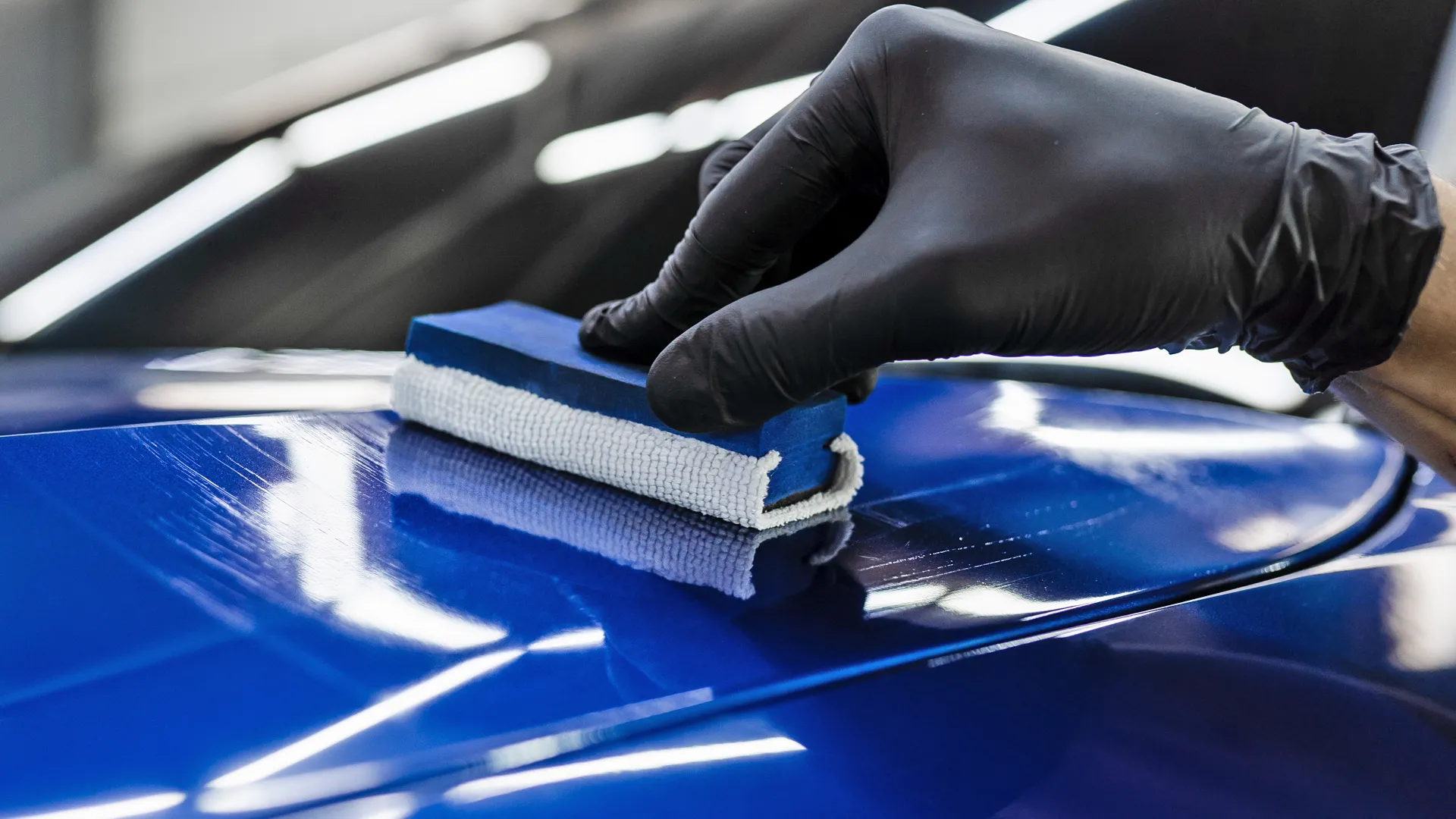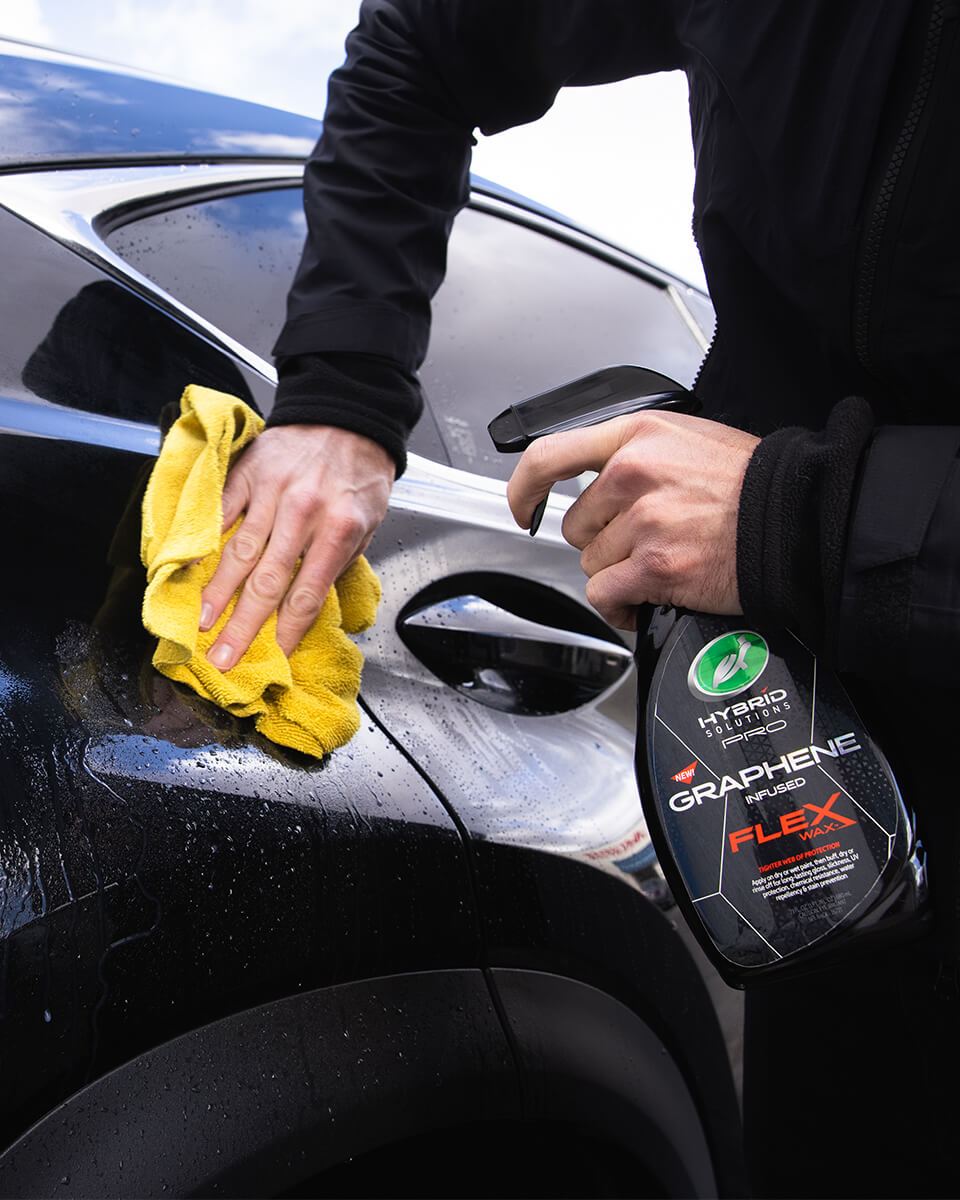The link between Ceramic Coating Newark and low upkeep costs
Wiki Article
Exploring the Scientific Research Behind Car Ceramic Coating and Its Safety Qualities
The scientific research of car ceramic coating provides a fascinating research in sophisticated vehicle defense. Made up primarily of silicon dioxide and polymers, these coverings form a durable bond with vehicle paint. This interaction enhances durability against environmental risks while offering hydrophobic benefits. The ins and outs of how these coatings work and their long-term advantages remain less recognized. Ceramic Coating Newark. Unloading these information discloses why ceramic layers are ending up being a favored choice for car treatmentWhat Is Ceramic Coating?
Ceramic coating is a liquid polymer that chemically bonds to the surface of a vehicle's paint. This innovative safety layer improves durability and uses remarkable resistance to environmental variables. Unlike conventional wax or sealers, which offer momentary defense, ceramic coatings create a lasting guard that can endure rough problems such as UV rays, acidic contaminants, and severe weather. When used correctly, the coating creates a hydrophobic surface, causing water to grain and slide off, which helps in maintaining the automobile's sanitation. In addition, it offers improved gloss and depth to the paint, making the car appear even more polished and dynamic. The application procedure typically involves comprehensive surface preparation, including cleansing and polishing, to assure peak bonding. As an outcome, ceramic coverings are becoming significantly popular among car fanatics and those seeking to secure their investments, guaranteeing to keep the vehicle's visual appeal while minimizing the regularity of upkeep.The Structure of Ceramic Coatings
The detailed formulation of ceramic finishings mostly is composed of silicon dioxide (SiO2), which is originated from natural resources like quartz and sand. This key part supplies the structure for the coating's resilience and protective qualities. In addition to SiO2, ceramic finishes commonly consist of different polymers and ingredients that enhance bond, flexibility, and resistance to ecological variables. These substances work synergistically to develop a durable obstacle versus pollutants such as dust, chemicals, and UV rays.Furthermore, some formulas integrate titanium dioxide (TiO2) or various other nanomaterials, which can increase the coating's hydrophobic properties, resulting in enhanced water repellency. The accurate make-up can differ substantially among manufacturers, impacting efficiency and durability. Inevitably, the mix of these aspects culminates in a safety layer that not only boosts the aesthetic appeal of lorries yet additionally offers to extend their life expectancy by securing the surface from possible damage.Just How Ceramic Coatings Work
Recognizing exactly how ceramic finishes work includes discovering their chemical composition, which contributes to their protective top qualities. The application process is essential for accomplishing excellent outcomes, while long life and toughness factors establish the coating's effectiveness gradually. Together, these aspects highlight the advantages and efficiency of ceramic coverings for lorry protection.Chemical Structure Explained
While several car proprietors look for lasting protection for their vehicles, the chemical structure of ceramic layers plays an essential duty in their performance. These finishes largely include silicon dioxide (SiO2), which is originated from natural minerals. This compound creates a strong bond with the automobile's paint, developing a long lasting, safety layer. Furthermore, several ceramic coverings contain titanium dioxide (TiO2), enhancing their hydrophobic buildings and resistance to UV rays. The visibility of polysiloxanes can additionally boost versatility and durability. Together, these elements add to the coating's capability to drive away water, dirt, and impurities, while likewise supplying a high-gloss coating. Comprehending this chemical foundation aids car proprietors value the robust protection offered by ceramic finishings.Application Process Summary
Using ceramic finishes includes a precise process that assures suitable bonding and protection for the car's surface. Initially, complete cleansing and purification of the car's outside are done to get rid of dust, gunk, and previous waxes. This step validates that the surface area is free from impurities that can impede adhesion. Following this, the paint is typically brightened to improve clearness and remove any imperfections. As soon as prepared, the ceramic coating is used in small areas using an applicator pad, allowing for consistent coverage. The coating is after that delegated cure, forming a strong chemical bond with the surface. Appropriate treating times and problems are critical, as they confirm the coating achieves its maximum performance and protective high qualities.Longevity and Toughness Aspects
Ceramic coverings are made to provide resilient defense via their sophisticated chemical structure, which produces a robust obstacle versus ecological pollutants. The sturdiness of these finishes is affected by aspects such as the thickness of the application, the quality of the item, and the conditions under which the vehicle is subjected. High-grade ceramic layers can last numerous years, withstanding scratches, UV rays, and chemical stains. Correct maintenance, including regular cleaning and regular reapplication, can additionally improve long life. Additionally, ecological aspects like climate and direct exposure to pollutants can influence the life-span of the coating. Generally, when applied and preserved appropriately, ceramic coatings supply extraordinary sturdiness, making them a popular choice for car fanatics seeking to maintain their lorry's appearance.Hydrophobic Characteristics and Water Repellency
Hydrophobic residential properties are a characteristic of quality car ceramic layers, significantly boosting the vehicle's surface efficiency. These finishings create a molecular bond with the car's paint, resulting in a surface that wards off water efficiently. When water enters call with a ceramic-coated surface area, it grains up and rolls off, minimizing the quantity of fluid that remains on the paint. This habits not only contributes to a cosmetically pleasing look but also lowers the build-up of contaminants such as dust, gunk, and road salts.The enhanced water repellency brings about simpler cleaning and upkeep, as less effort is called for to remove undesirable materials. Furthermore, the hydrophobic nature of ceramic layers helps in protecting against water spots, which can mar the coating of uncoated surface areas. Overall, the incorporation of hydrophobic homes in ceramic coatings plays an essential duty in preserving the vehicle's pristine look while simplifying maintenance.Defense Against Scratches and UV Damage
Car ceramic finishes use substantial protection against scrapes and UV damages. The scratch resistance mechanism develops a durable layer that absorbs impacts, while the UV protecting benefits help maintain the vehicle's paint honesty over time. Together, these attributes add to a longer-lasting and visually enticing surface.Damage Resistance Device
Utilizing sophisticated innovation, ceramic coatings provide a durable guard versus scratches and UV damages, boosting the durability and appearance of car surfaces. The scrape resistance system of these coatings is credited to their distinct molecular structure, which creates a resilient bond with the lorry's paint. This bond produces a hard, protective layer that can soak up influences and withstand abrasions. Furthermore, the smooth surface area of the coating minimizes rubbing, making it challenging for impurities to stick and create scrapes. The chemical make-up of ceramic finishings usually consists of nanoparticles that strengthen the protective layer, further improving its strength. Consequently, automobiles treated with ceramic finishings display substantially boosted scratch resistance compared to standard wax or sealers, ensuring a pristine surface gradually.UV Shielding Perks
The safety top qualities of ceramic coverings extend past scrape resistance to consist of substantial UV protecting advantages. These coatings produce a robust obstacle that mirrors hazardous ultraviolet rays, protecting the car's paint and underlying products. Extended exposure published here to UV radiation can bring about fading, oxidation, and deterioration of the paint finish. By integrating ceramic finishings, vehicle proprietors can successfully reduce these threats, maintaining the visual appeal and honesty of their autos. Additionally, the UV obstructing residential or commercial properties add to enhanced long life, minimizing the frequency of painting and maintenance. Ultimately, the combination of ceramic finishings uses a comprehensive go to this web-site option for safeguarding vehicles from the destructive impacts of sun exposure, making certain a continual, lively appearance gradually.The Durability and Upkeep of Ceramic Coatings

Frequently Asked Concerns
Can Ceramic Coating Be Applied to Any Type Of Kind Of Automobile?
Ceramic coating can be applied to numerous types of automobiles, consisting of automobiles, trucks, and motorbikes. Nevertheless, surface prep work and compatibility with specific products are crucial for optimal adhesion and efficiency of the coating.Just How Much Does Ceramic Coating Generally Price?
Ceramic coating usually costs between $500 and $2,000, depending on elements such as car size, coating quality, and professional application. The financial investment can give resilient security and enhance the vehicle's appearance in time.
Is Specialist Application Essential for Best Results?
The requirement of professional application usually depends upon wanted outcomes. Specialists usually guarantee proper surface prep work and application strategies, leading to ideal bonding and longevity of the coating, which may be challenging for inexperienced people to attain.Can Porcelain Coatings Be Eliminated or Fixed?
Ceramic coverings can be eliminated or repaired, though the process may need particular solvents or techniques - Ceramic Coating Newark. Appropriate removal is necessary to prevent damage to the underlying surface, emphasizing the importance of specialist help for suitable resultsExactly How Does Porcelain Coating Contrast to Traditional Wax?
The comparison in between ceramic coating and traditional wax discloses that ceramic layers use superior sturdiness, enhanced security against ecological contaminants, and longer-lasting sparkle, while wax needs more frequent application and look what i found supplies much less overall resistance to damages.Report this wiki page